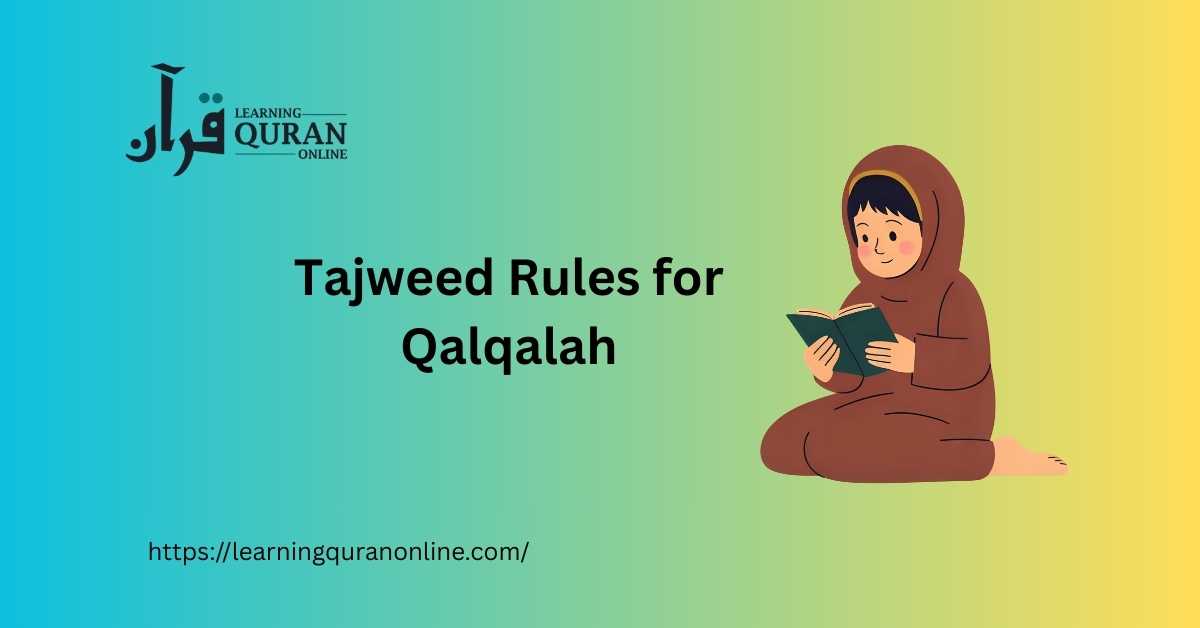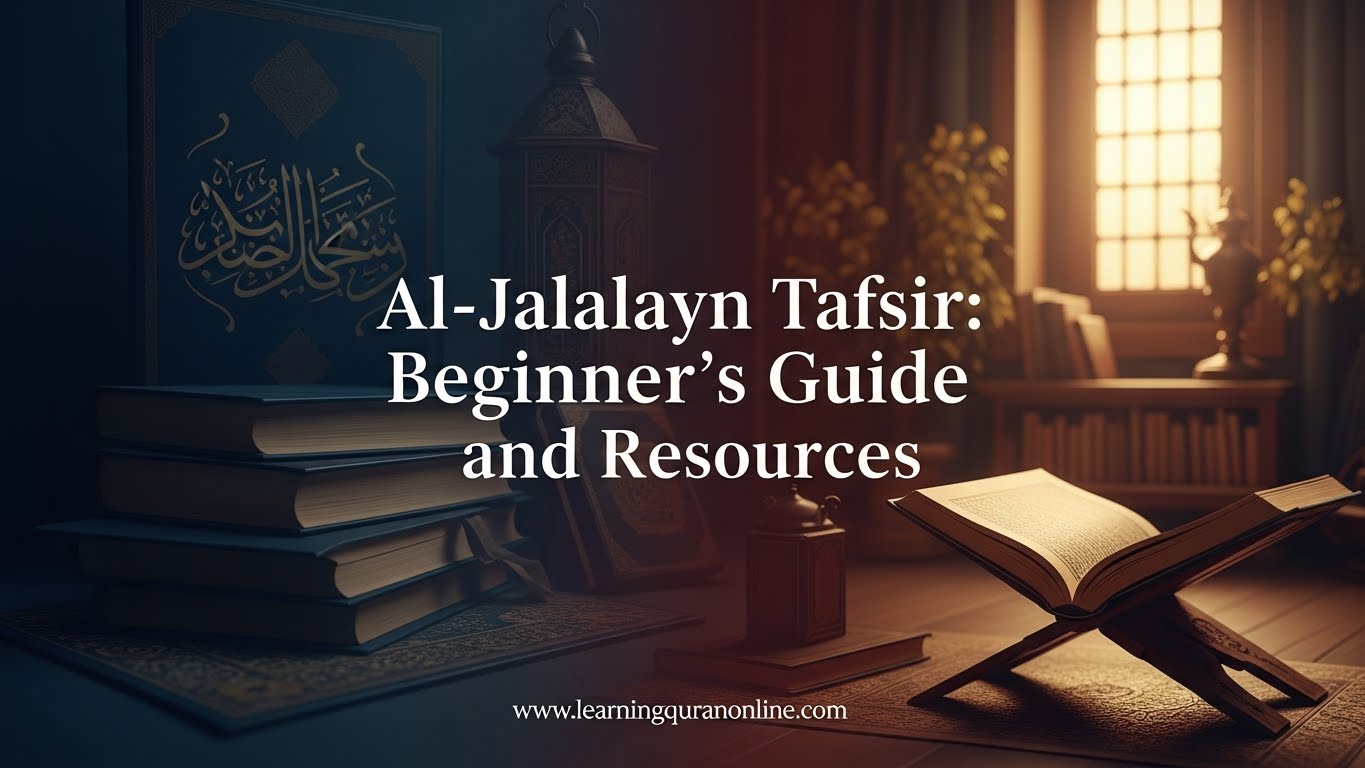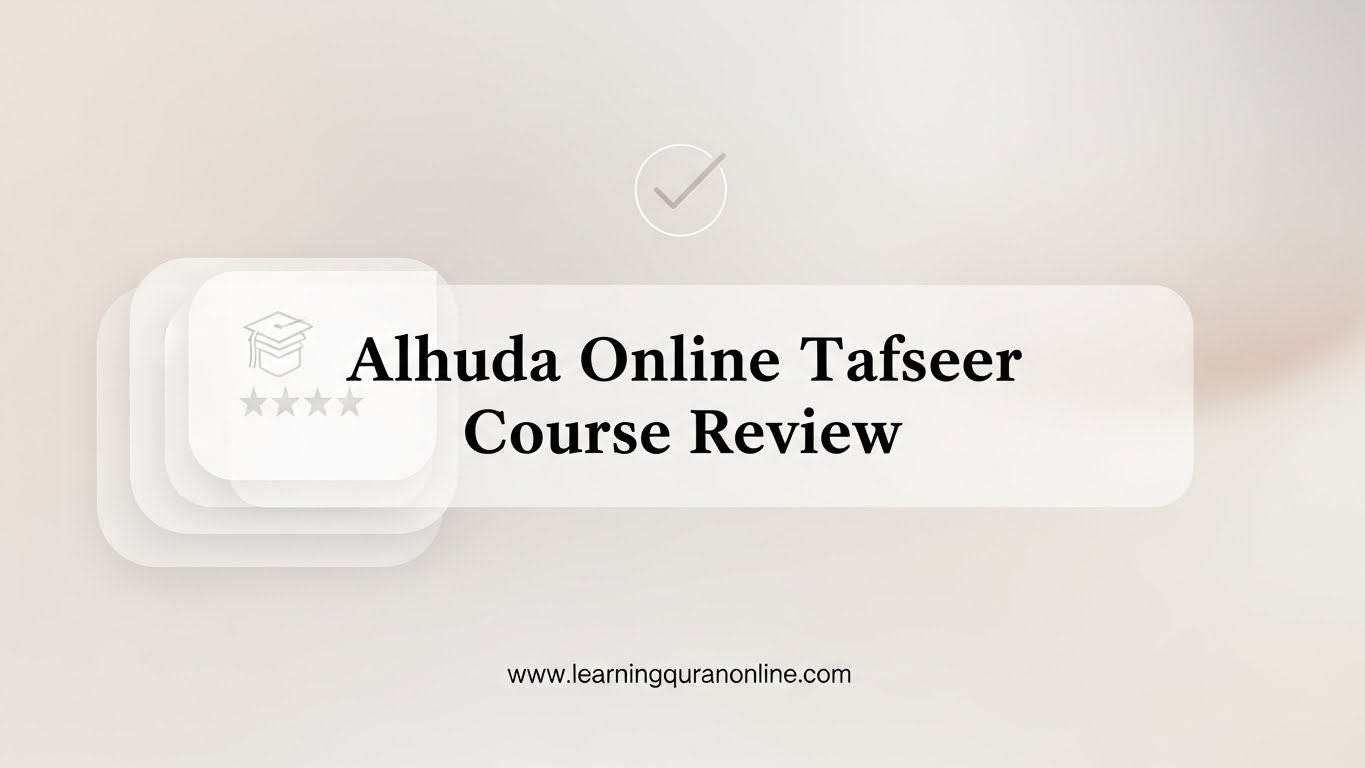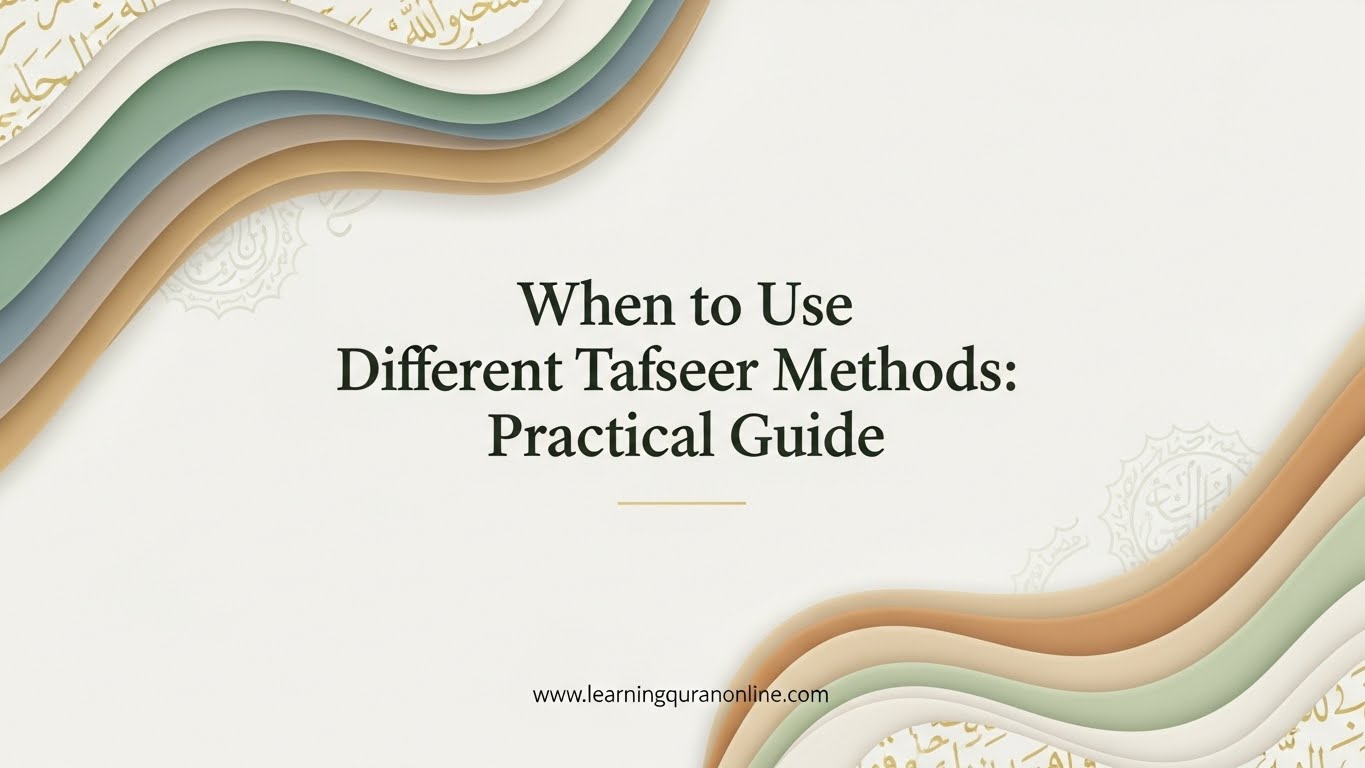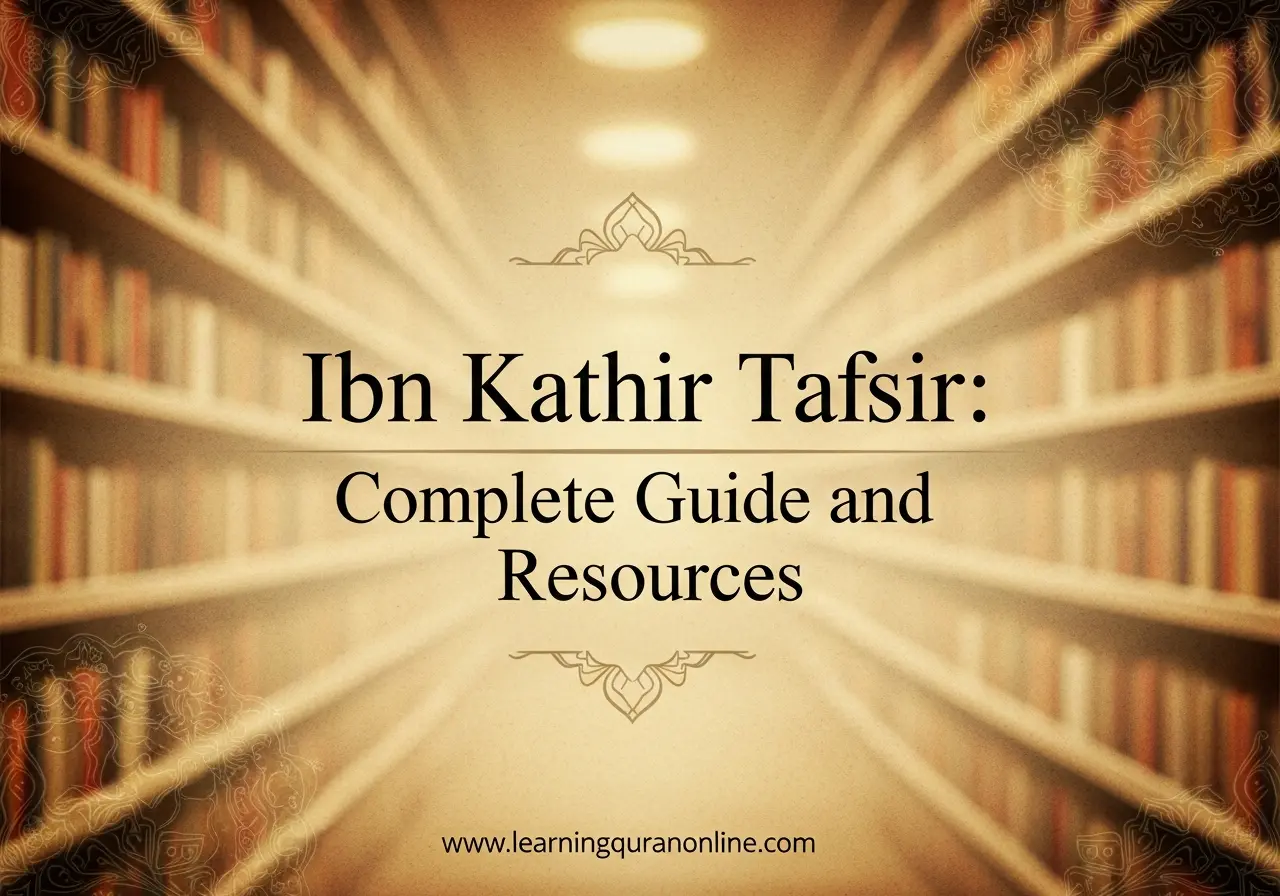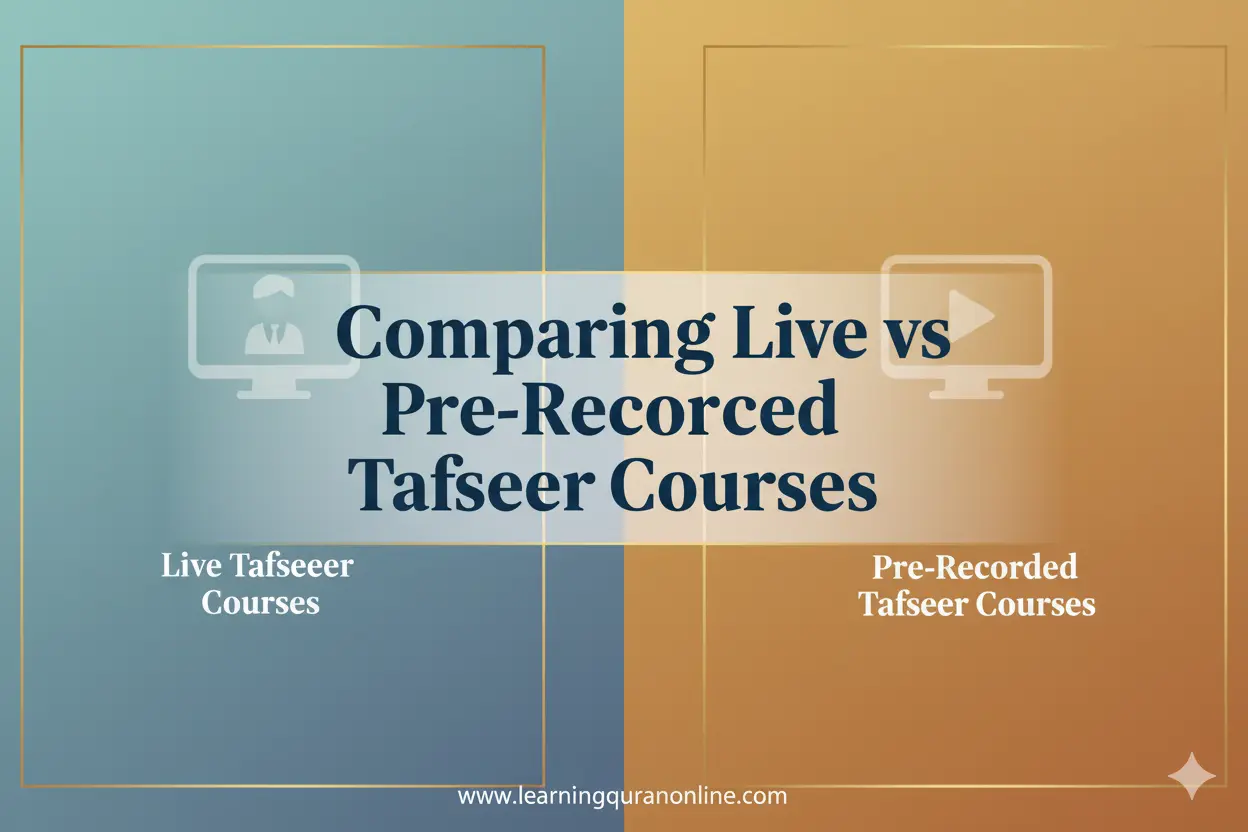Qalqalah is one of the essential tajweed rules every Qur’an student must master. Often described as a slight “echo” or “bounce” in the sound, qalqalah helps preserve proper pronunciation and beautify recitation. In this guide we will explain what qalqalah is, list the qalqalah letters, describe the types (sughra and kubra), outline the exact conditions for its application, show practical examples, and give exercises to improve your qalqalah. Whether you are a beginner learning tajweed rules or an intermediate reciter polishing your articulation, this post covers everything you need to know about the Tajweed Rules for Qalqalah.
Table of Contents
ToggleWhat Is Qalqalah?
Qalqalah (قلقلة) literally means “to shake” or “to bounce.” In tajweed, it refers to a slight vibration or echoing sound produced when certain consonants are pronounced while in a state of sukoon (i.e., they are not carrying a vowel). The echo makes the consonant audible and distinct, preventing it from being swallowed or merged with surrounding sounds. Mastering qalqalah is crucial for accurate Tajweed recitation and for maintaining the clarity of Qur’anic words.
Qalqalah Letters
The letters that require qalqalah are five and commonly memorized as a group:
- ق — Qaf
- ط — Ta (emphatic T)
- ب — Ba
- ج — Jeem
- د — Dal
Mnemonic tip: Arabic learners often memorize them as “قطب جد” or the sequence “ق ط ب ج د” to remember the qalqalah letters quickly.
When Does Qalqalah Occur?
Qalqalah applies when any of the five letters becomes sakin (has sukoon). This can happen in two main scenarios:
- Natural sukoon within a word (continuation): the consonant is silent due to grammar or consonant clusters.
- Sukoon resulting from stopping (waqf): when you pause or stop on a word whose final letter is one of the qalqalah letters.
Types of Qalqalah (Levels of Echo)
There are two common classifications of qalqalah based on the strength of the echo:
1. Qalqalah Sughra (Minor Qalqalah)
Qalqalah sughra occurs when a qalqalah letter is in the middle of a word or at the end of a word but you continue recitation (no stop). The echo is light and subtle—just enough to make the consonant audible without emphasizing it strongly.
2. Qalqalah Kubra (Major Qalqalah)
Qalqalah kubra happens when you stop (waqf) on a qalqalah letter at the end of a word. The echo here is stronger and more pronounced—sometimes called the “bouncing” sound because the consonant is released with more force to ensure clarity at the pause.
Note: Many tajweed manuals describe various degrees of qalqalah intensity (minor, medium, major) depending on context, but the practical distinction beginners need is between the subtle echo when continuing (sughra) and the stronger echo when stopping (kubra).
How to Produce Qalqalah: Articulation and Points of Emphasis
Producing a correct qalqalah sound requires attention to articulation and controlled breath. Key points:
- Ensure the qalqalah letter is truly sakin (no vowel sound after it).
- Use a short, controlled release of sound from the letter’s point of articulation (makhraj). The sound should be audible but not accompanied by an unnecessary vowel.
- Keep the throat and mouth relaxed; avoid strong aspiration (excessive air) which can distort the echo.
Articulation (Makhraj) of Each Qalqalah Letter
- ق (Qaf) — Produced by touching the back of the tongue to the soft palate (near the throat).
- ط (Ta) — Emphatic “t”: produced by contact of the tip of the tongue against the upper gum/teeth ridge with pharyngealization.
- ب (Ba) — Produced by closing both lips; qalqalah on b is a light lip “bounce.”
- ج (Jeem) — Produced by the middle of the tongue touching the palate (varies by dialect but keep classical point).
- د (Dal) — Produced by the tip of the tongue touching the upper gum/teeth ridge.
Common Examples and Practical Application
Here are practical situations where you will apply the Tajweed Rules for Qalqalah:
- Middle of a word (sughra): when the qalqalah letter is followed by a letter with a vowel in the same breath. Example (transliteration): “biqd” — the qaf with sukoon gets a light echo during continuation.
- At the end of a word while continuing (sughra): a final qalqalah letter with sukoon but followed by another word in the same verse.
- Stopping (kubra): when the verse or phrase ends with a qalqalah letter, e.g., the word “قَدْ” (qad) pronounced with a strong echo if you stop there.
Common Mistakes to Avoid
- Confusing qalqalah with heavy emphasis: Qalqalah is an echo, not an emphatic lengthening or stressing; keep it short and crisp.
- Not applying qalqalah on stopping: When you pause on a qalqalah letter, a strong echo is required; omitting it changes clarity.
- Over-aspirating: Using too much breath can turn the echo into an unwanted vowel sound.
- Applying qalqalah to non-qalqalah letters: Only the five letters ق ط ب ج د require qalqalah.
Tajweed Mistakes Beginners Make
Exercises to Improve Qalqalah
Practice consistently using these simple drills:
- Isolate each qalqalah letter and pronounce it sakin (e.g., “qaq”, “tat”, “bab”, “jaj”, “dad”) to feel the articulation and echo.
- Recite short words that end with qalqalah letters and practice stopping and continuing to notice the difference in echo strength.
- Record yourself reciting verses that contain qalqalah letters and compare with a qualified reciter or reliable tajweed audio.
- Practice slow recitation (tarteel) focusing on clarity of each qalqalah consonant before increasing speed.
Examples from the Qur’an (Practice Phrases)
To develop practical ability, practice verses and phrases from the Qur’an that contain qalqalah letters. Listen to proficient reciters and imitate their qalqalah sound. Remember to practice both continuation (sughra) and stopping (kubra) on those letters.
When Qalqalah Interacts with Other Tajweed Rules
Qalqalah often occurs in combination with other tajweed rules:
- When combined with madd (prolongation), preserve the qalqalah on the consonant that follows the madd.
- When stopping (waqf) meets an assimilated or silent letter, check whether the final letter is one of the qalqalah letters before applying the echo.
- If a qalqalah letter is followed by a hamzatul wasl or hamzatul qat’, treat according to the standard rules for stopping and continuation but maintain the qalqalah when the letter is sakin.
Tips for Teachers and Students
- Always identify qalqalah letters visually in the script while reading to anticipate the echo.
- Use audio references from skilled qaris to internalize the sound of both sughra and kubra qalqalah.
- Get feedback from a qualified tajweed teacher; minute corrections in articulation make a big difference.
- Practice daily in short focused sessions rather than long infrequent sessions to build muscle memory.
Why Qalqalah Matters
Qalqalah is not merely ornamental: it preserves the meaning and distinctiveness of Qur’anic words. Incorrect qalqalah can change words or make them hard to understand, and since Qur’an recitation demands precision, applying the Tajweed Rules for Qalqalah is essential for respectful, correct, and beautiful tajweed.
Conclusion
Mastering qalqalah is a cornerstone of tajweed that every reciter should take seriously. Learn the five qalqalah letters (ق ط ب ج د), understand when they are sakin, distinguish between qalqalah sughra (minor) and qalqalah kubra (major), and practice deliberately with audio feedback and teacher guidance. If you are looking for structured online tajweed lessons and one-on-one feedback to perfect your qalqalah and other tajweed rules, Learning Quran Online offers experienced instructors and tailored courses.
With regular practice, attentive listening to qualified reciters, and guidance from a qualified teacher, your qalqalah will become natural and improve the clarity and beauty of your Qur’an recitation.

